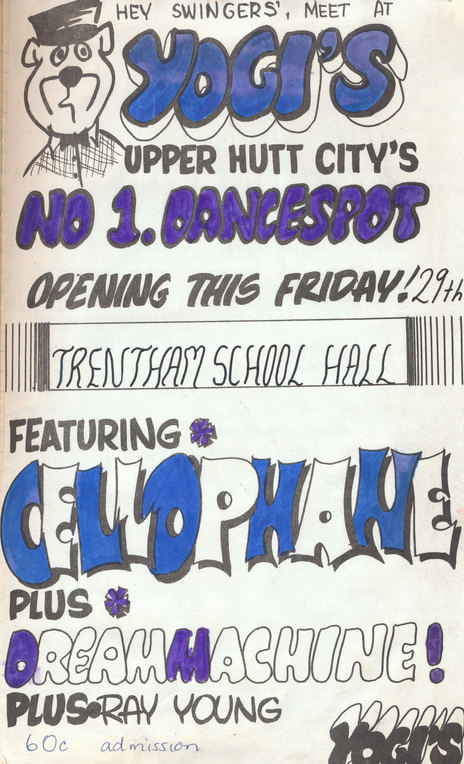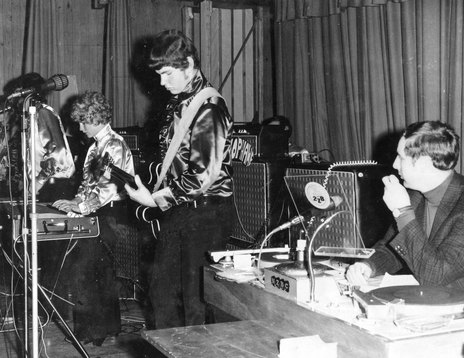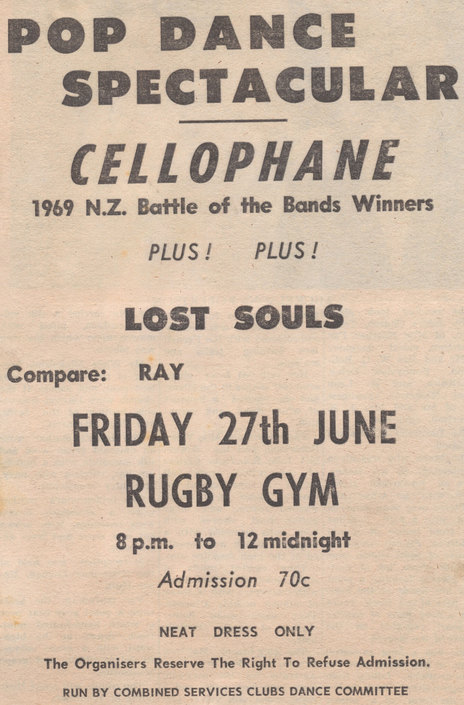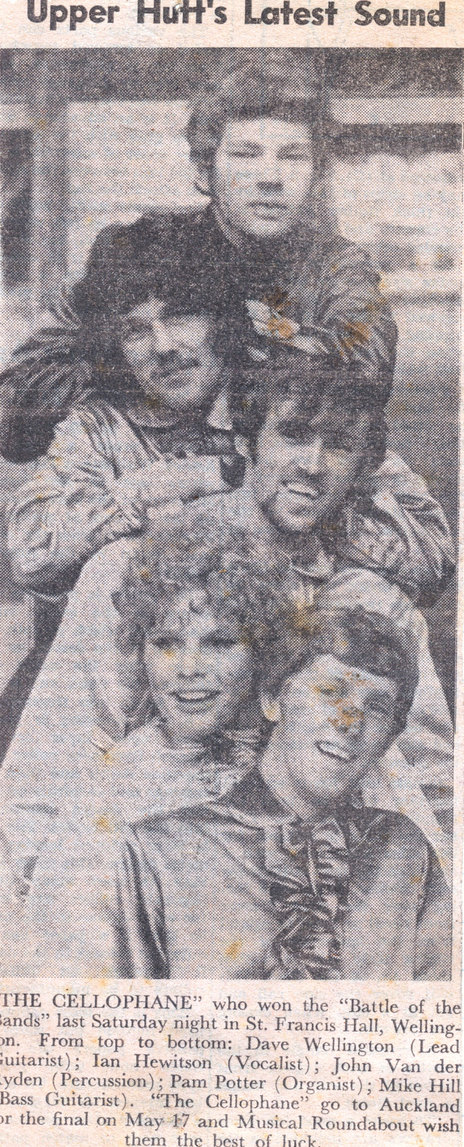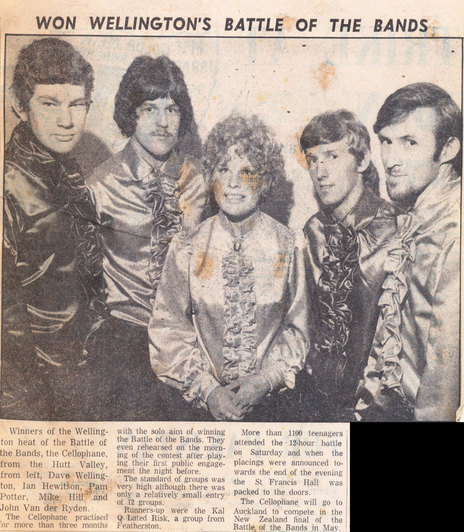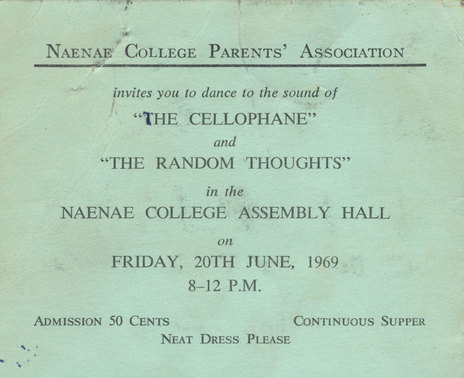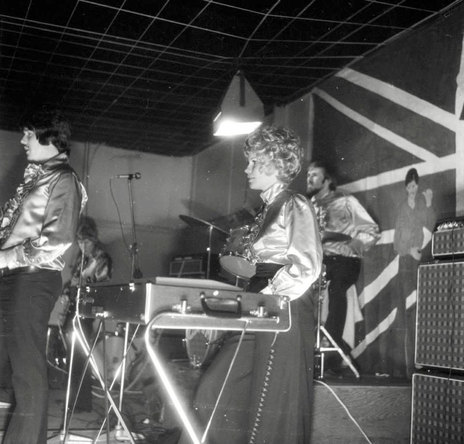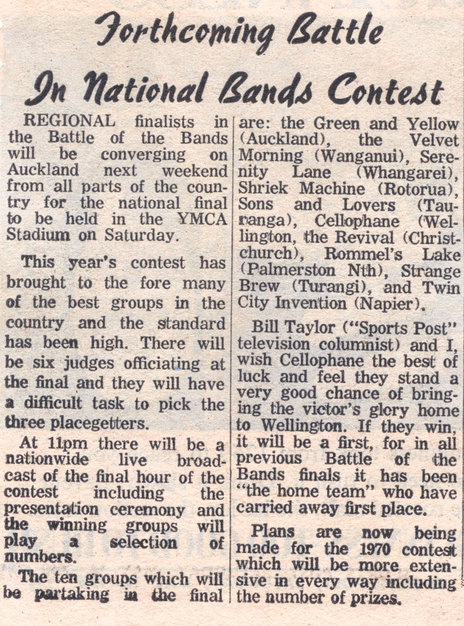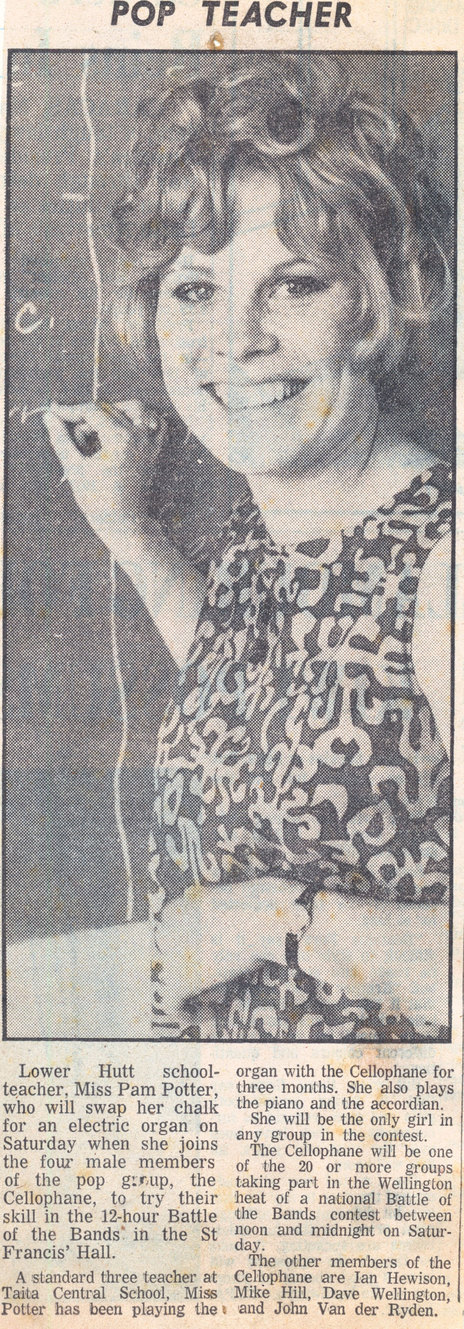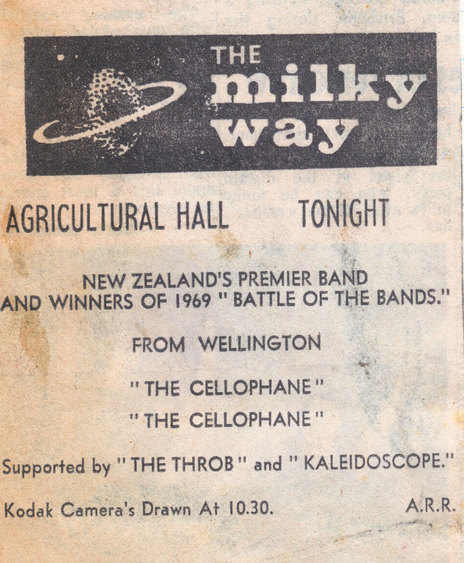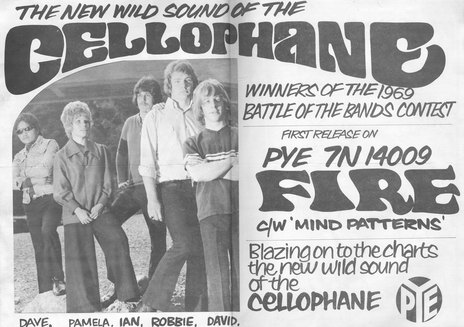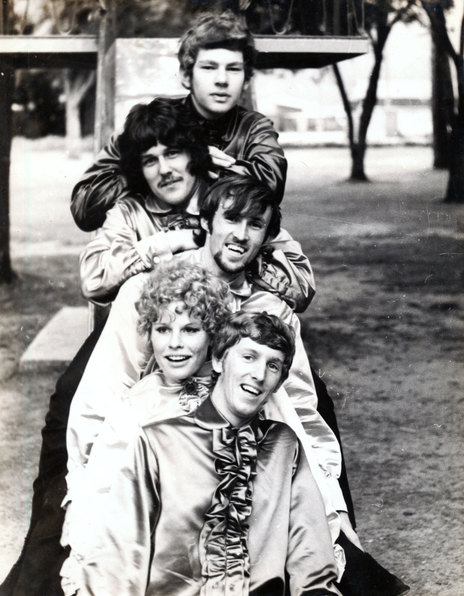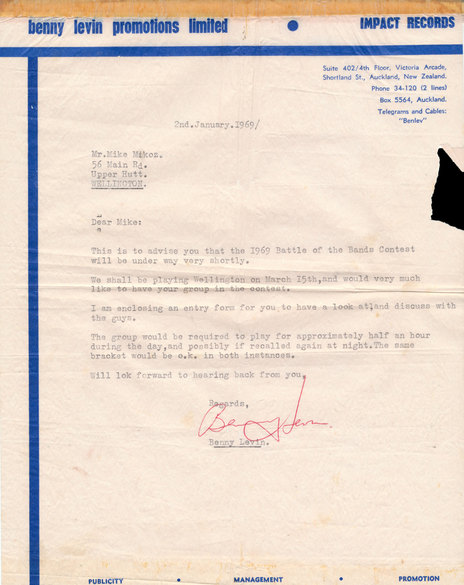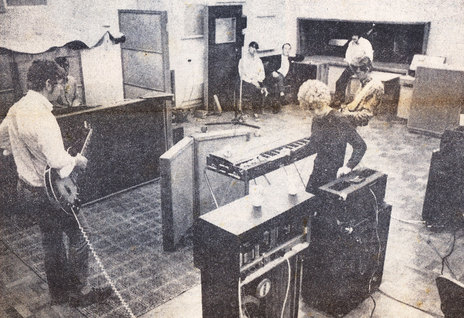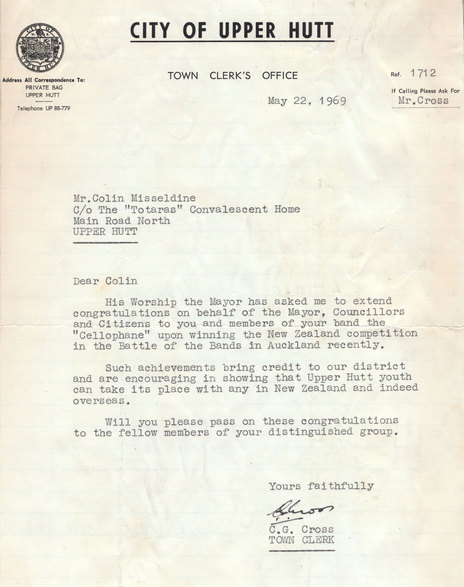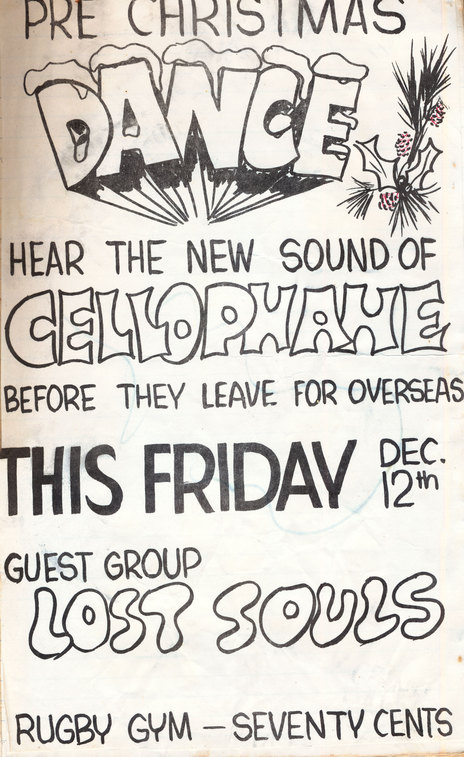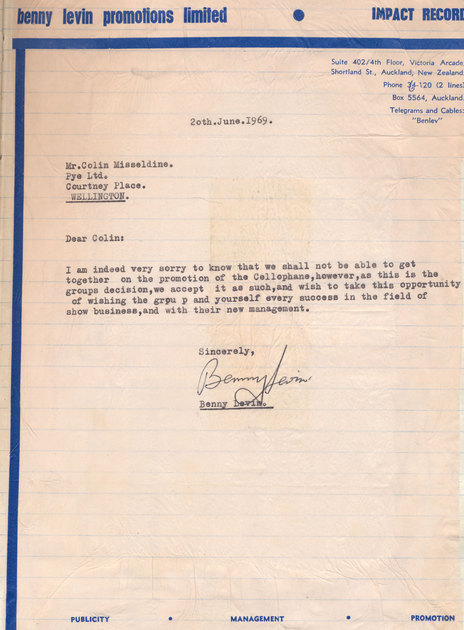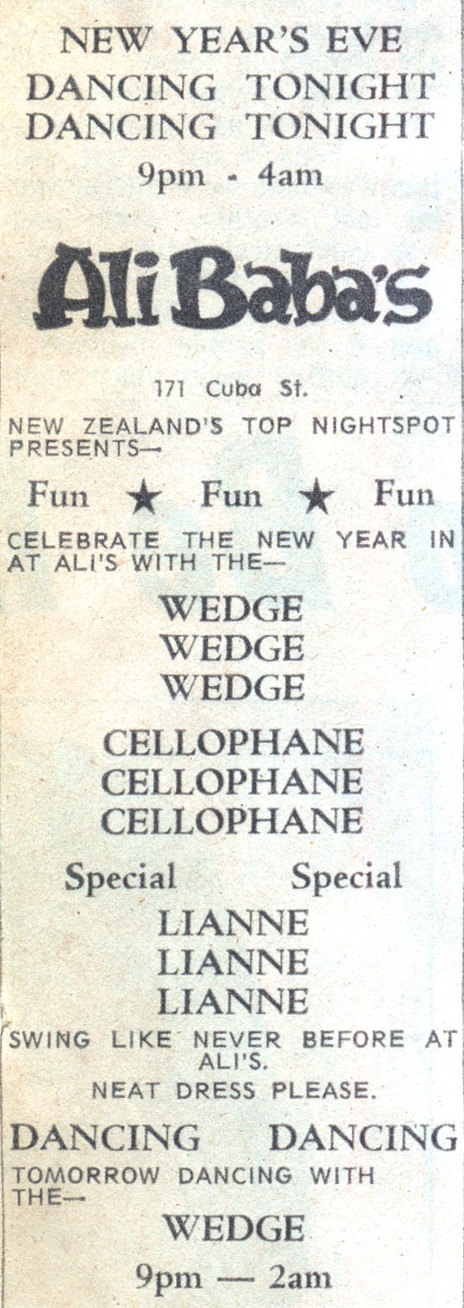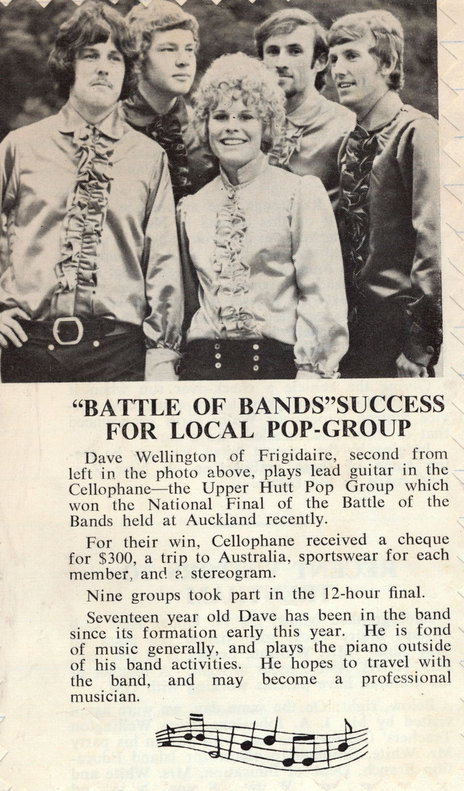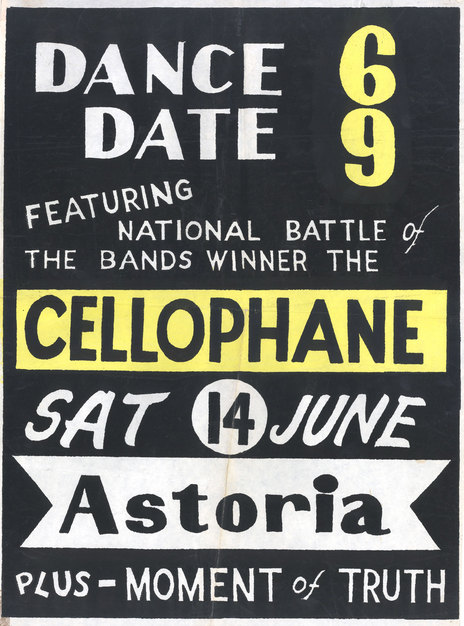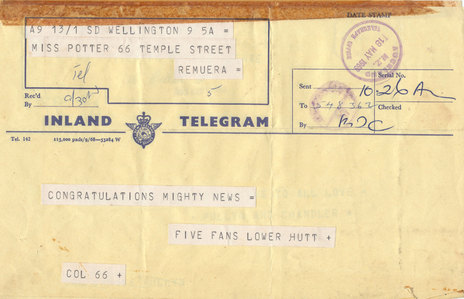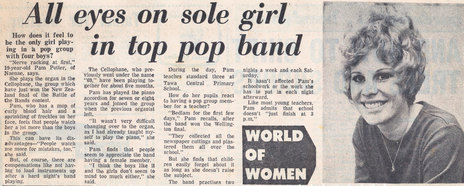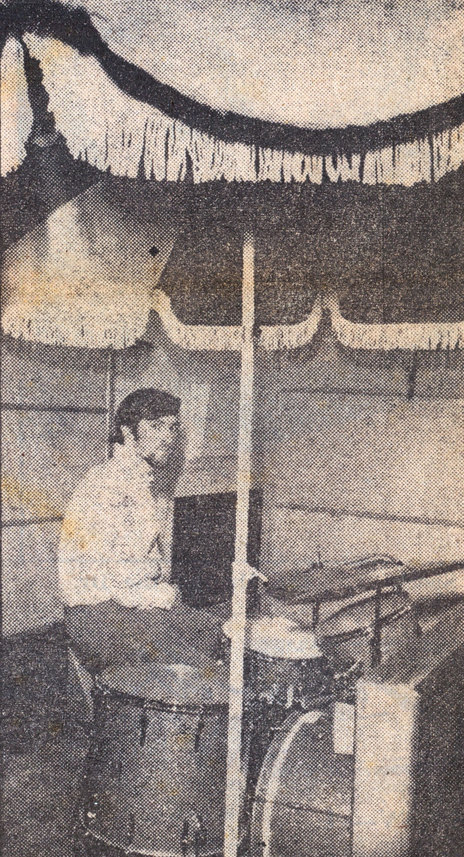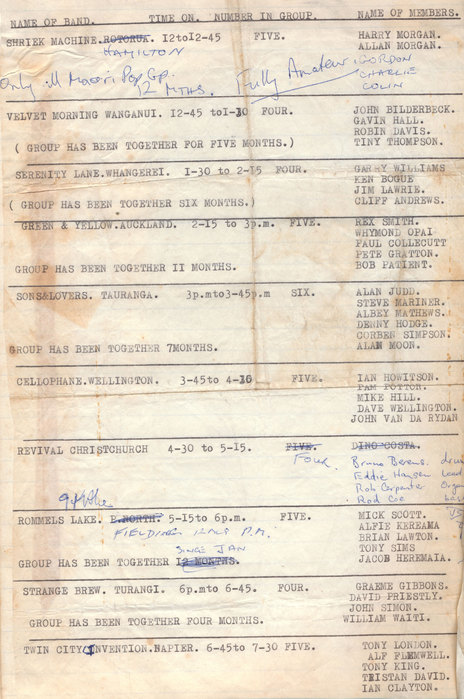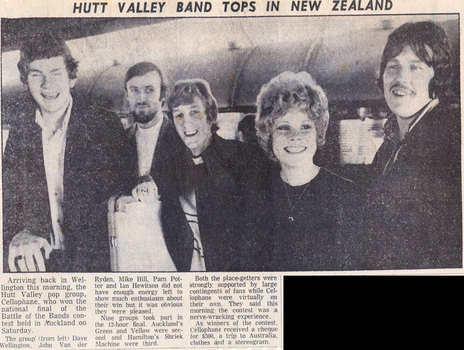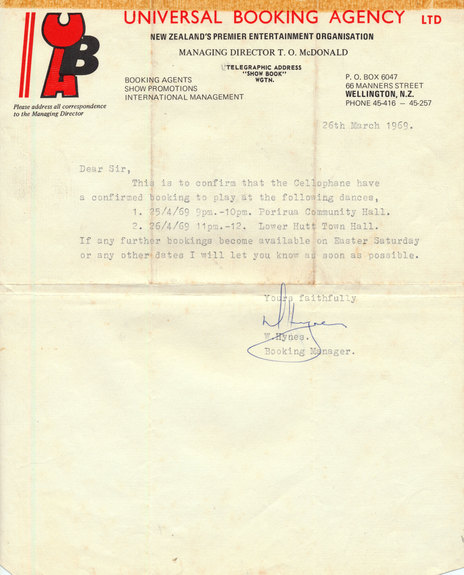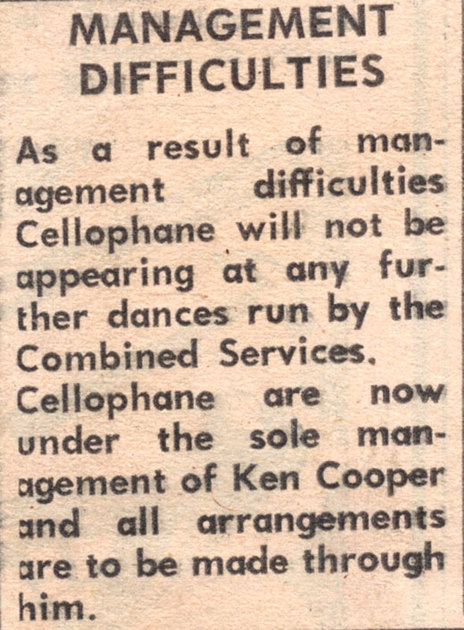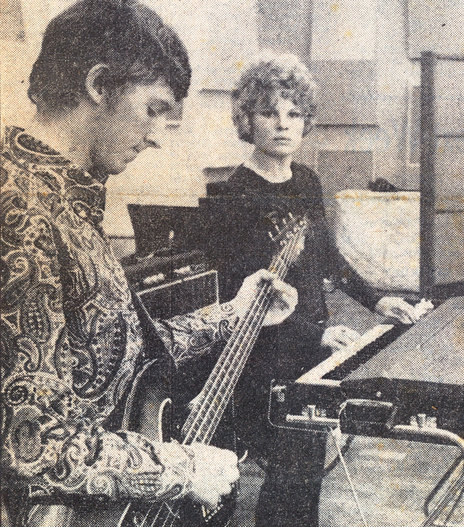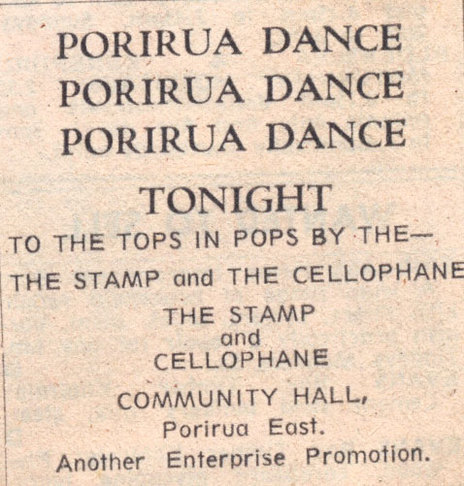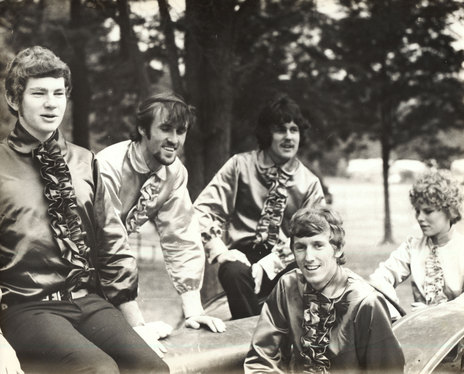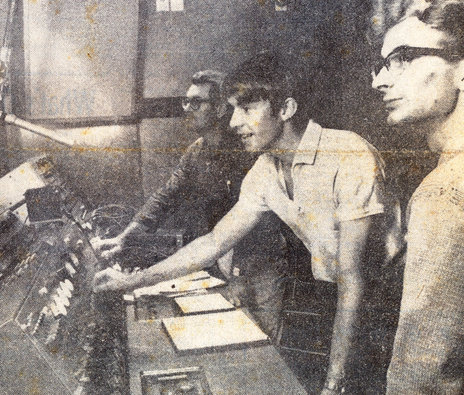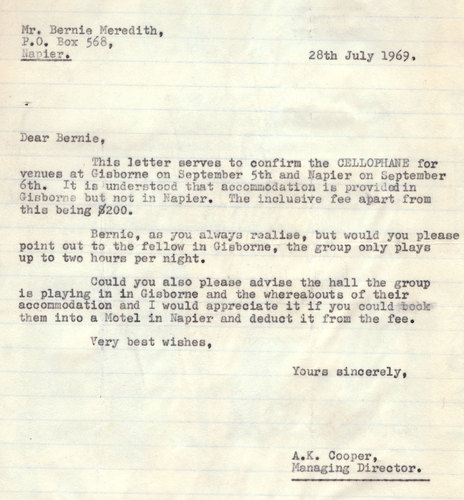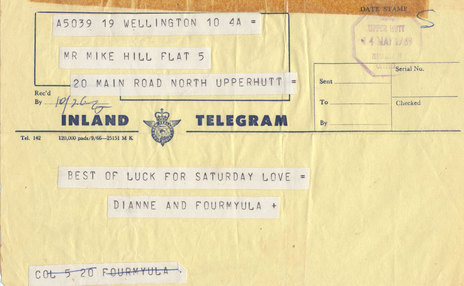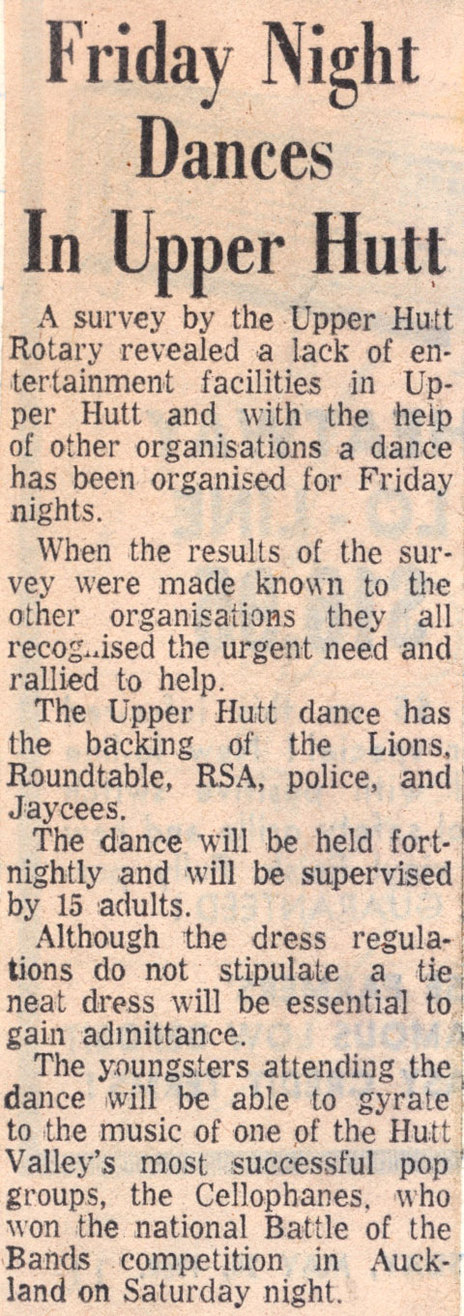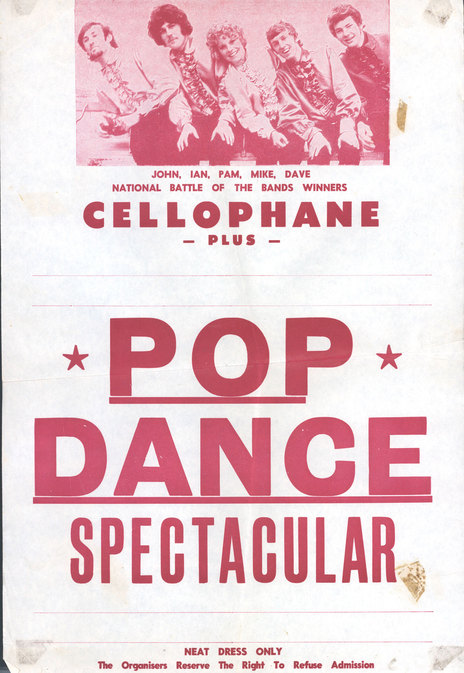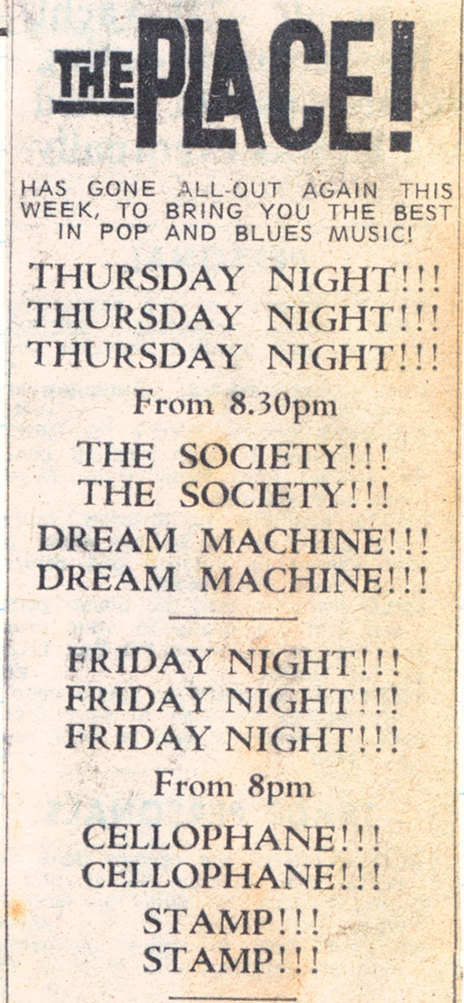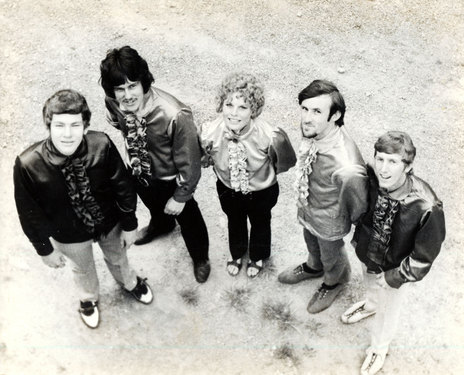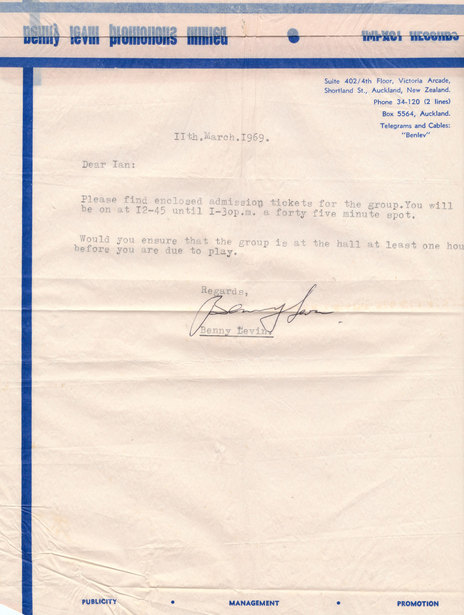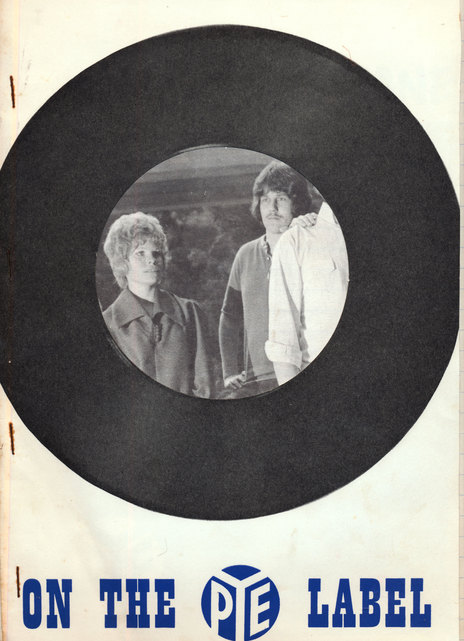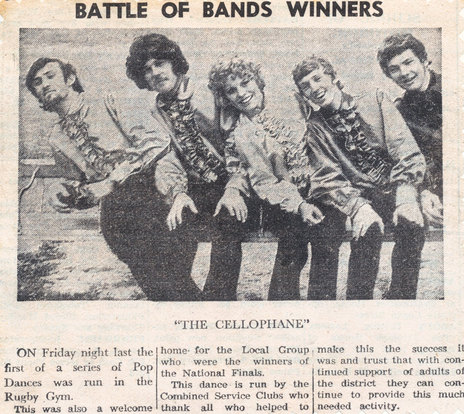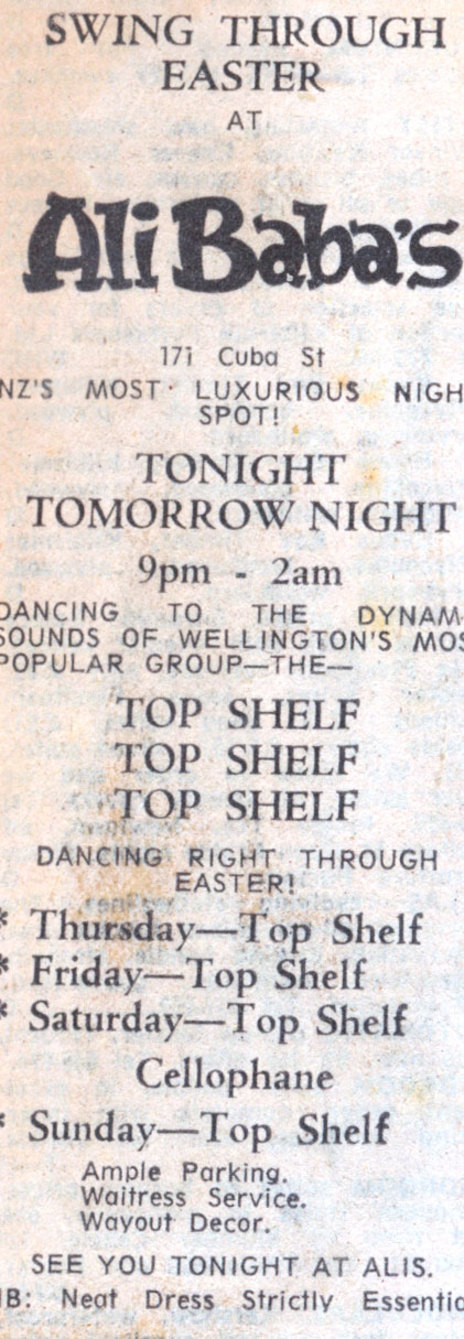Quinn’s Post, the pub in Trentham, was yet to establish the live reputation it would enjoy in later years, having just emerged from the end of six o’clock closing. And yet, with an abundance of teenagers who wanted entertainment, something was stirring in this youthful town.
It had stirred earlier in the mid-decade when the local high school produced perhaps the finest psychedelic pop band of their generation, The Fourmyula, a quintet who would take New Zealand popular songwriting to another level and point to a future where we wrote about the world around us. It stirred when bands like The Bitter End, a raucous R&B combo, filled the local halls mid-decade.
In their wake a multitude of bands formed in the new city, most of whom neither recorded or are much remembered.
In their wake a multitude of bands formed in the new city, most of whom neither recorded or are much remembered, aside from in the memories of those who attended dances in places like the Rugby Gym and local halls. Among those were the wonderfully named Sebastian’s Floral Array and The Intruders (which included Phil Hope, brother of The Fourmyula’s Martin Hope, and later of The Kal-Q-Lated Risk).
In August 1968 members of both bands came together to form 691, although they seemed to have played irregularly, if at all. In December they were re-tagged as Cellophane, having also recruited Pam Potter, a primary school teacher from Naenae in Lower Hutt. They played their first gig under this name just after Christmas.
The initial line-up was Ian Hewitson (vocals), Dave Wellington (lead guitar), Michael Hill (bass), Pam Potter (keyboards), John Van der Ryden (drums), with Colin Misseldine, another Upper Hutt native who was well placed in a job at Pye Records, as manager. Early gigs included Onslow College, the aforementioned Rugby Gym in Upper Hutt, and dances over the hill in Porirua. By early March they were playing at a venue called The Kaleidoscope in the city.
The inclusion of a female member caught the eye of the press early, as, while it wasn’t unheard of (Auckland’s Clevedonaires for example whilst The Fair Sect were all females), it was unusual, and the March 13 issue of The Evening Post featured Pam Potter as a “Pop Teacher”. When asked, she named Jon Lord and Keith Emerson as influences.
In January 1969 they were invited by Auckland promoter Benny Levin to enter his high profile nationwide Battle of The Bands.
After an approach in January 1969, they were invited by Auckland promoter Benny Levin to enter his high-profile nationwide Battle of The Bands, with a Wellington heat in March 1969 at the St. Francis Hall (then a club called The Monaco) in Hill Street. They won, seeing off The Kal-Q-Lated Risk who came second, and The Random Thoughts in third place. The prize was a place in the May final in Auckland. When asked about the evening by The Evening Post, Benny Levin said, as only he could, “I’m very pleased, mostly with the good behaviour tonight.”
The Fourmyula were the last Hutt Valley band to win the local heats, and the Hutt Leader noted, with some pride, “It happened again”.
The NZBC, unusually, but at the insistence of radio producer Hugh McDonald who wanted to capture the sound of the bands, took the top three, plus another band from the night, The Wedge, into the studio the next day and recorded a four-song session with local airwaves star Keith Richardson hosting. The results seem to be lost, but Cellophane recorded Neil Diamond’s ‘Kentucky Woman’.
Local success and a growing fan base brought Cellophane to the attention of both of the big-name agents in the capital, Tom McDonald and Ken Cooper. McDonald, via his UBA agency, had them playing the Lower Hutt Town Hall and the Porirua Community Centre, and Ali Baba’s in April and Cooper booked them at The Place in Willis Street. In late April, Cellophane and The Dedikation played a new Tom McDonald club, Teensville in Lower Hutt – the night included a “Miss Teensville” contest.
Also in April, Cellophane recorded the backing for a Ray Columbus song, “C’mon To New Zealand”, to be used in a New-Zealand-is-hip styled tourist promotion film for Australian cinema. Plans to release it as a single on Benny Levin’s Impact label came to nothing, probably because Ray Columbus had already moved to Polydor that year. It can be heard in the last few minutes of the promo film, with Pam Potter’s keyboards – swirling and psychedelic – driving it. Columbus sent the finished vocal to the band, who recorded the backing at HMV’s studio with Peter Dawkins producing. They didn’t meet Columbus.
The 1969 New Zealand Battle Of The Bands was held in Auckland’s YMCA Stadium on May 17 and the Sunday Times made mention that Pam Potter was “the only girl”, while John Berry in the Sunday News allocated a third of his (brief) mention of the event to the same clearly important fact, ignoring all the other members of the other nine acts.
Three thousand kids filled the YMCA Stadium and those who were there recall that the noise was overpowering.
Three thousand kids filled the YMCA Stadium, and those there recall that the noise was overpowering (more on that soon). The whole show filled 12 hours with Benny Levin having negotiated, for the first time, that the final hour, essentially the awards ceremony and a performance by the winning band, be broadcast live nationwide on the NZBC’s ZM (in the bigger cities) and regional stations.
When the votes were counted Cellophane were the clear winner, with Auckland’s Green And Yellow in second place, and Hamilton’s Shriek Machine third. While the judges (Benny Levin, his business partner Russell Clark, journalists Wendy Munro, Vee Noble and Mike Stock, singer Ricky deVon, and Wellington entrepreneur Bruce Warwick) were convinced, with Benny Levin telling The Evening Post “there was no doubt they deserved to win even for sheer musical ability”, the public response was mixed. The two runners-up had large and very vocal contingents of supporters, who were less than happy with the result. Cellophane, the length of the North Island away from home, were on their own and the displeasure was vocal.
The prize was $300, a stereo, a record deal with Impact Records (or at least an option to sign the band) and dates in Australia and in Auckland, booked, naturally, by Benny Levin Promotions Limited. The $300 was put towards that band essential – a van.
Within days of the win, another problem arose. A Mr W.R. Keith from the National Audiology Centre was present at the YMCA and measured Cellophane at 100-104 dB in front of the stage. “Anyone present for the whole twelve hours without a long break would possibly come away with a certain amount of permanent damage,” he told The Evening Post, and the story was then picked up by The Dominion and other papers. By the end of the month, there were questions in Parliament, with the then Minister of Health Mr McKay assuring the house that “any hearing loss was likely to be only temporary.”
Cellophane retired to Wellington after the win, exhausted by the ordeal and decided to regroup and consider their options. All the band had steady jobs so the lure of nationwide touring and a trip to Australia was tempered by the fact that they would have to put their stable lives to one side and take a massive punt.
They decided to step back from the opportunities offered, although Ken Cooper continued to book the band heavily as far away as Gisborne and Napier.
For Benny Levin and Russell Clark, the primary role of The Battle Of The Bands was to source touring acts for their stable, and the Impact deal was part of that package. If a band didn’t want to join that stable, regardless of whether they were winners of The Battle Of The Bands, then their interest in the act soon passed. So Cellophane, who declined Benny’s offer of management (after first accepting it, with Bruce Warwick being assigned to the band) seemed to disappear, with Auckland’s Playdate asking later in the year, “Whatever ever happened to Cellophane?”
They self-produced at least three tracks for Pye, selecting a cover of The Crazy World Of Arthur Brown’s ‘Fire’ and a strong Ian Hewitson original, ‘Mind Patterns’.
Quite a lot actually. In June, Dunedin drummer Dave Kirkland replaced John Van der Ryden and in August booking agent Ken Cooper replaced Colin Misseldine as business manager, with the band issuing a press release to that effect. Misseldine would assume full management again in November, with Cooper continuing as booker. Cellophane’s business relationships seem to have never been less than complicated and somewhat impenetrable from a distance, but regardless of that the bookings kept on coming, with gigs in the Rugby Gym in Upper Hutt in June, July and August, a Town Hall show, dances in Trentham, Lower Hutt and Wellington over the same period. They would also venture further afield, playing Dunedin’s Milky Way, Napier’s Top Hat and Palmerston North’s Astoria.
Meanwhile, the Colin Misseldine connection had provided a recording deal with Pye (which may explain why he was re-hired as manager) and initially, Peter Dawkins was to produce the debut single. For some forgotten reason, Dawkins never completed the session but in September the band went into HMV studios where they self-produced four tracks for Pye, selecting a cover of The Crazy World Of Arthur Brown’s ‘Fire’ and a strong Ian Hewitson original, ‘Mind Patterns’, for release. Unreleased tracks 'I Can’t Quit Her' and 'Kentucky Woman' seem to be lost.
Before the single hit the stores Robert Mackie, another Dunedinite, relocated to Wellington and replaced Michael Hill.
With ‘Fire’ as the A-side, the single was issued in November. It was an odd decision to issue a cover of fairly recent worldwide smash, especially given the fact that the band were publicly saying they were targeting a heavier sound built around their own originals, which largely filled their set. One assumes the decision was made by Pye, but despite being well reviewed, the single failed to chart nationally, although it sold very well in Wellington. 'Fire' was an adventurous reworking of the original, featuring Pam Potter's organ as the lead instrument, but one suspects it was just too soon to cover such a massive hit.
After months of indecision, in early December Cellophane announced they were leaving the country, making the move to Australia in the New Year after fulfilling commitments, including another Rugby Gym dance and a short season at Ali Baba’s in Cuba Street, including New Year’s Eve.
However, it wasn’t to be, with the band splitting early in 1970. Ian Hewitson and Pam Potter, who had long been a couple, went to Sydney without the others. Sadly, Pam was killed in a car crash shortly after they arrived. She was only 22. Other members of Cellophane would play in Wellington bands in the 1970s, notably Tapestry, but none would find that very brief moment of public favour that this quintet from the Hutt had achieved.
–
Much of the story of Cellophane came from Pam Potter’s scrapbook, kept all these years by her brother Graham. AudioCulture would like to thank Graham for allowing us access to those pages, and it seems only right that we should dedicate this profile to the memory of Pam Potter, whose robust and evocative keyboards dominate the few recordings we have of Cellophane.
